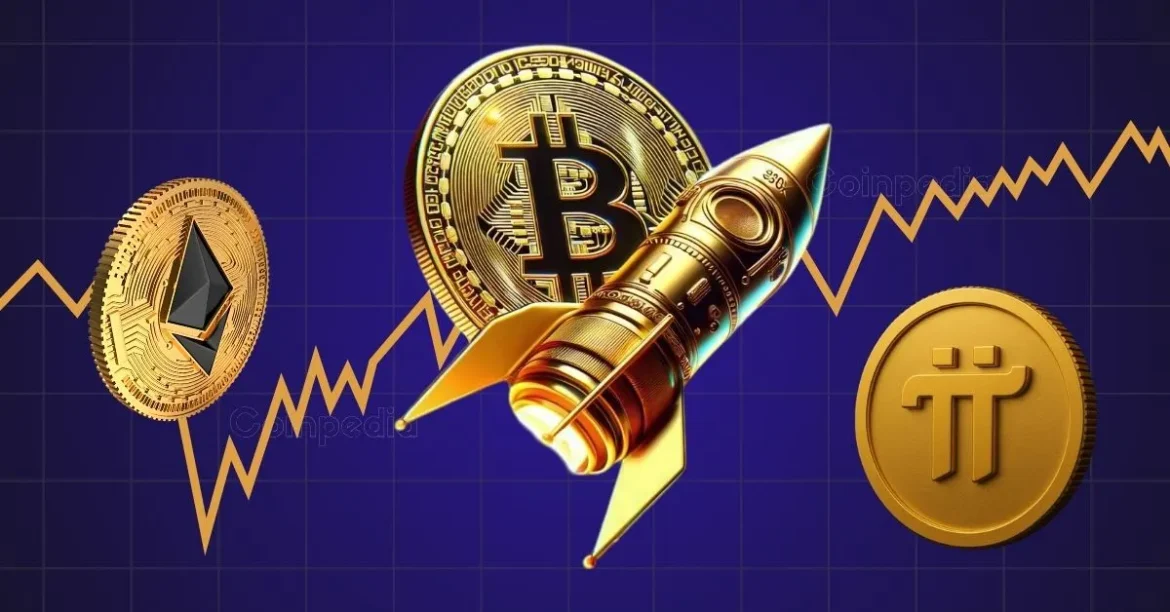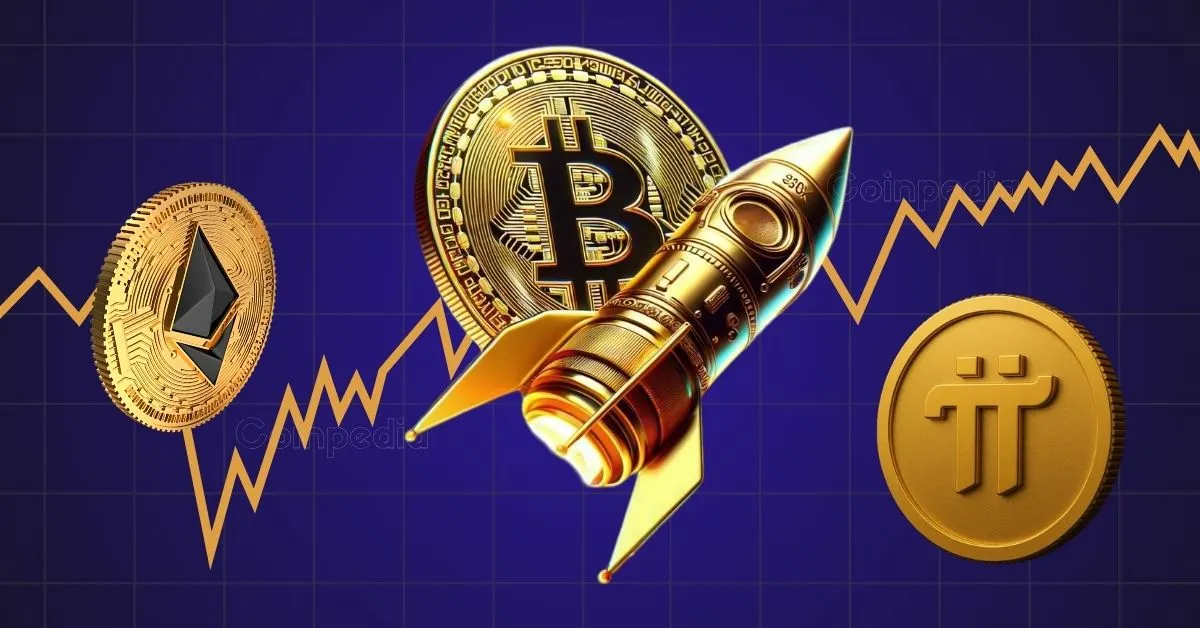Understanding Bitcoin’s Price Surge in May 2025: A Deep Dive into Key Drivers and Market Dynamics
Bitcoin’s journey through May 2025 has captivated investors and market observers alike, as the flagship cryptocurrency surged past significant milestones, including breaks above $100,000 and toward new all-time highs. Various converging factors—ranging from macroeconomic shifts to institutional interest—have propelled Bitcoin’s momentum. This detailed analysis explores why Bitcoin has seen such remarkable movement during this period, contextualizing it within ongoing trends and market sentiments, and shedding light on what the future might hold.
—
The Long-Term Climb and Historical Context
Since Bitcoin’s inception in 2009, its price trajectory has been a volatile rollercoaster shaped by speculation, adoption cycles, regulatory shifts, and broader economic forces. Early years saw rapid spikes and drastic crashes, but over time, Bitcoin has increasingly been regarded as a digital store of value, often compared to gold due to its fixed supply cap of 21 million coins. By 2025, roughly 19 million coins had been mined, further amplifying scarcity-driven demand dynamics.
The rise beyond $100,000 in early 2025 marked a significant psychological and technical milestone, signaling growing market confidence. Historical data shows that hitting or surpassing major technical thresholds often induces momentum-driven rallies, attracting both retail and institutional investors seeking exposure.
—
Five Compelling Reasons Behind Bitcoin’s Surge
1. Institutional Endorsement and Accumulation
Institutional players have played an outsized role in driving Bitcoin’s recent rally. Large corporate holders such as MicroStrategy recorded substantial Bitcoin purchases, exemplified by acquisitions exceeding $700 million in early May 2025 despite facing legal challenges. Additionally, the inclusion of firms linked to crypto, like Coinbase joining the S&P 500, has helped legitimize Bitcoin as part of mainstream financial portfolios.
These developments generate strong confidence signals. Market participants see institutional accumulation as a bullish indicator, fueling expectations that demand will continue to outpace supply, supporting upward price pressure.
2. Macro-Economic Tailwinds: Inflation, Interest Rates, and Trade Policies
Several macroeconomic factors have converged in favor of Bitcoin’s price:
– Easing Inflation and Rate Cuts: As inflation concerns peak and central banks signal potential interest rate reductions, risk assets, including cryptocurrencies, tend to rally. Lower real yields reduce the opportunity cost of holding non-yielding assets like Bitcoin.
– Trade and Tariff Developments: Recent easing of trade tensions and tariff negotiations—especially between major economies—has improved overall market sentiment, indirectly supporting Bitcoin as an alternative asset option amid renewed economic optimism.
– US Dollar Weakness: Bitcoin’s inverse correlation with the US Dollar Index has been notable. A weakening dollar encourages investors to diversify into assets perceived as hedges against currency debasement.
3. Technical Breakouts and Market Sentiment
Momentum traders have reacted to significant technical patterns:
– The breakout from symmetrical triangular patterns generated sharp price rallies above levels like $102,000 and $105,000, creating fresh support zones.
– High short liquidation levels—a process where traders betting against Bitcoin are forced to close positions at losses—have intensified short-term bullishness.
– The psychological impact of Bitcoin nearing $110,000 has triggered a wave of new buying fueled by fear-of-missing-out (FOMO).
These technical dynamics contribute to increased volatility and rapid price swings but also underpin sustained optimism in the near term.
4. Growing Acceptance and Policy Shifts
Government attitudes toward cryptocurrencies have shifted from outright skepticism and restriction to more measured support. Notable indicators include:
– Governments and regulators in certain jurisdictions are adopting clearer frameworks, reducing uncertainty.
– Policy endorsements and pro-crypto initiatives have reassured large investors and contributors to ecosystem infrastructure.
– The ongoing approval and inflow into spot Bitcoin Exchange-Traded Funds (ETFs) provide easier, regulated access for a broader range of investors.
Collectively, these factors facilitate smoother capital inflows and foster an environment conducive to Bitcoin’s price appreciation.
5. Broader Crypto Ecosystem Momentum
Bitcoin’s rally has coincided with dynamic shifts across the broader cryptocurrency landscape:
– Ethereum’s mixed performance—with flash crashes yet recoveries—demonstrates ongoing market rotations but renews interest in diverse blockchain assets.
– Emerging cryptocurrencies like VIRTUAL have gained attention, highlighting altcoin seasons that often accompany and amplify Bitcoin’s bull runs.
– Events such as XRP futures launches and stablecoin regulatory discussions add vibrancy, indicating a maturing sector that draws in varied investor profiles.
The interplay between Bitcoin and altcoins creates reinforcing cycles of investor engagement and capital circulation.
—
Short-Term Fluctuations Amid a Bullish Backdrop
Despite the bullish thrust overall, May 19, 2025, saw some retracement episodes, including dips below $103,000 and profit-taking after hitting new intraday highs. These pullbacks are typical in high-volatility environments and reflect traders locking in gains, reaction to credit rating downgrades, and transient risk-off sentiments in response to macroeconomic news.
Nonetheless, the persistent support levels and rapid rebounds reveal underlying resilience. Strong ETF inflows and institutional buying have helped maintain a generally upward trajectory despite such temporary corrections.
—
Forecasts and Forward-Looking Perspectives
Analysts and financial institutions maintain an optimistic outlook for Bitcoin’s near and medium-term trajectory:
– Price targets range from $120,000 by mid-2025 to potential highs near $200,000 by year-end, driven by forecasts from global banks like Standard Chartered.
– Longer-term speculation even envisions prices upward of $500,000 by 2028, based on sustained adoption, scarcity effects, and integration into traditional finance.
– Key milestones approaching include psychological levels like $115,000 and $130,000, which may catalyze further institutional commitment and retail enthusiasm.
While market cycles suggest that bull runs eventually reach exhaustion, the current combination of industry support, macroeconomic easing, and technical momentum signal a potent environment for new all-time peaks.
—
Conclusion: Bitcoin on the Cusp of a New Era
Bitcoin’s performance in May 2025 is emblematic of a maturing asset that has transcended initial skepticism to become a critical component of the global financial ecosystem. Its climb beyond $100,000 and sustained rallies are not mere speculative fads but are underpinned by robust institutional participation, favorable macro conditions, evolving policy frameworks, and market technicals that all converge to boost investor confidence.
Although brief pullbacks and volatility remain inherent to Bitcoin’s nature, the prevailing narratives suggest the cryptocurrency is poised for fresh records and expanded adoption. As traditional finance and crypto markets increasingly intertwine, Bitcoin’s journey reflects both evolving technology and investor psychology—a compelling saga captivating the financial world today and well into the future.





